KlangBildKlang, the mdw’s transdisciplinary festival, celebrated its start on 20 April at the Künstlerhaus in Vienna with a reception and the concert Beyond Keys: Synesthetic Soundscapes.
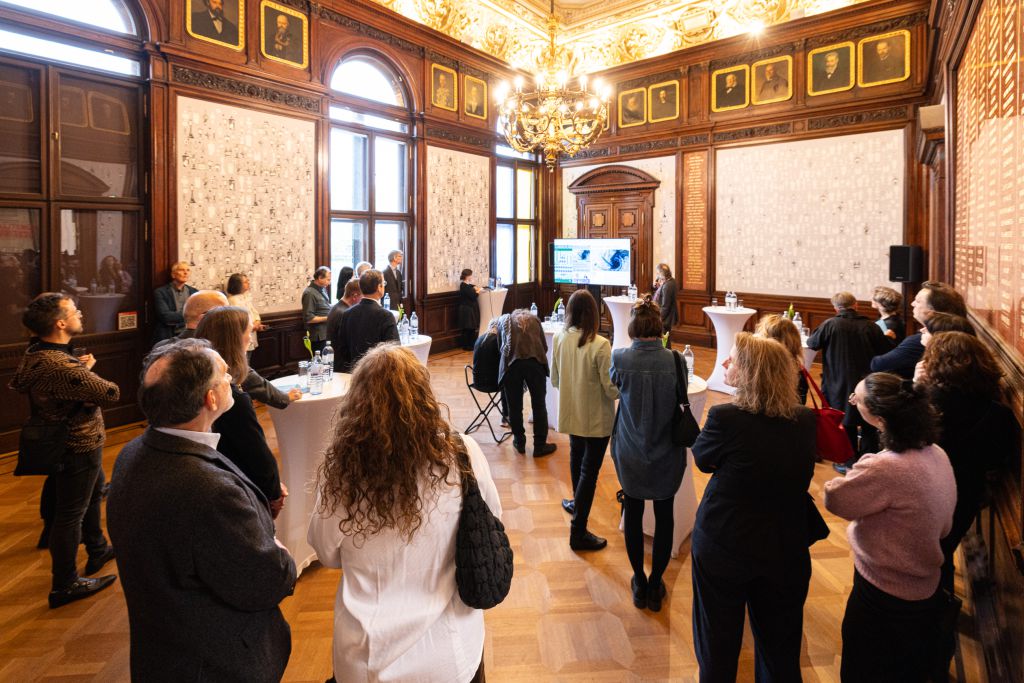
Johannes Meissl, Vice Rector for International Affairs and Art, presented the festival program and provided an overview of the more than 50 artistic projects accompanied by music and art mediation activities.
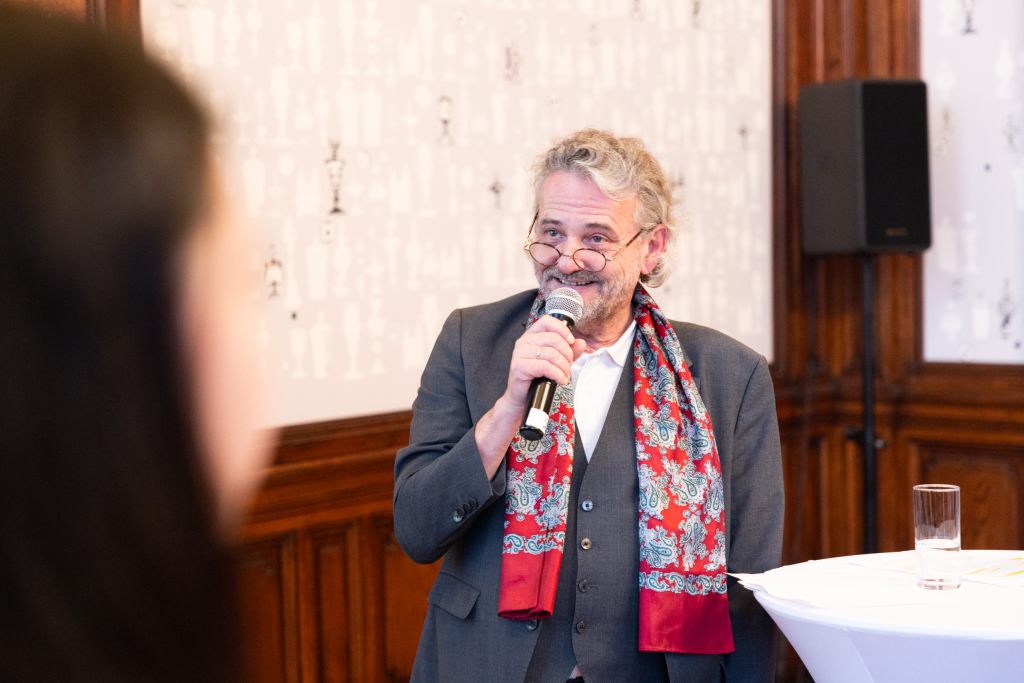
The central themes of KlangBildKlang are interconnections between various artistic genres and making them accessible to a diverse audience. Can sounds become visible? Can we hear images, colours and movement? – In various performance formats, mdw students and teachers explore these questions through musical interactions with visual artworks, architecture, theatre, dance, digital-visual animations, and artificial intelligence.
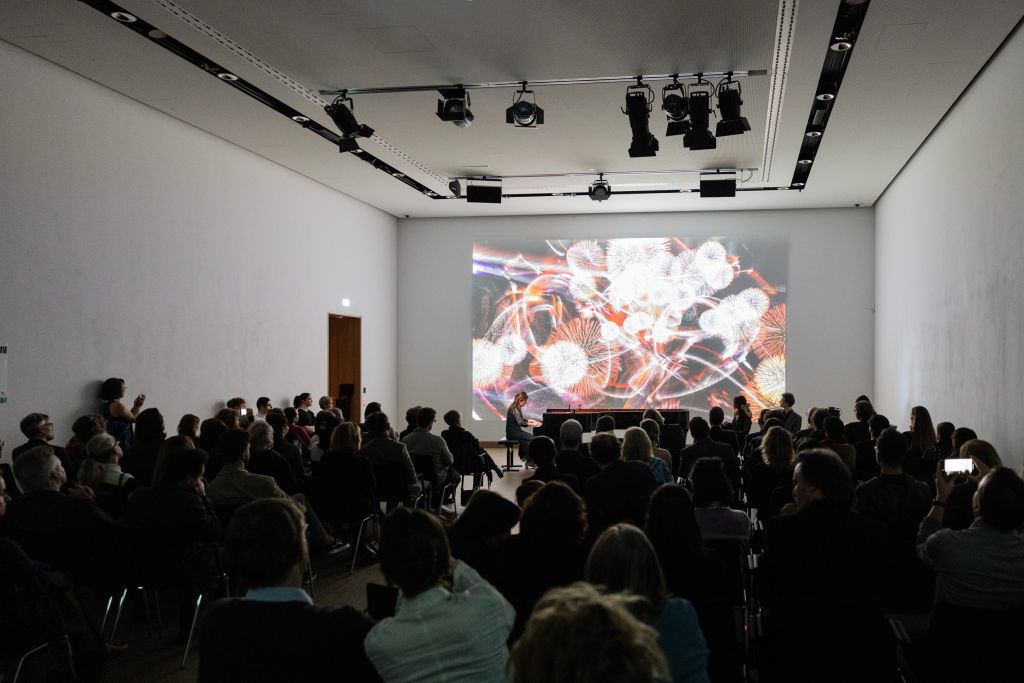
A successful example of such a format was the concert Beyond Keys: Synesthetic Soundscapes that followed the reception. The evening was led by mdw lecturer and pianist Konstantin Semilakovs and his student Warwara Priadeeva.
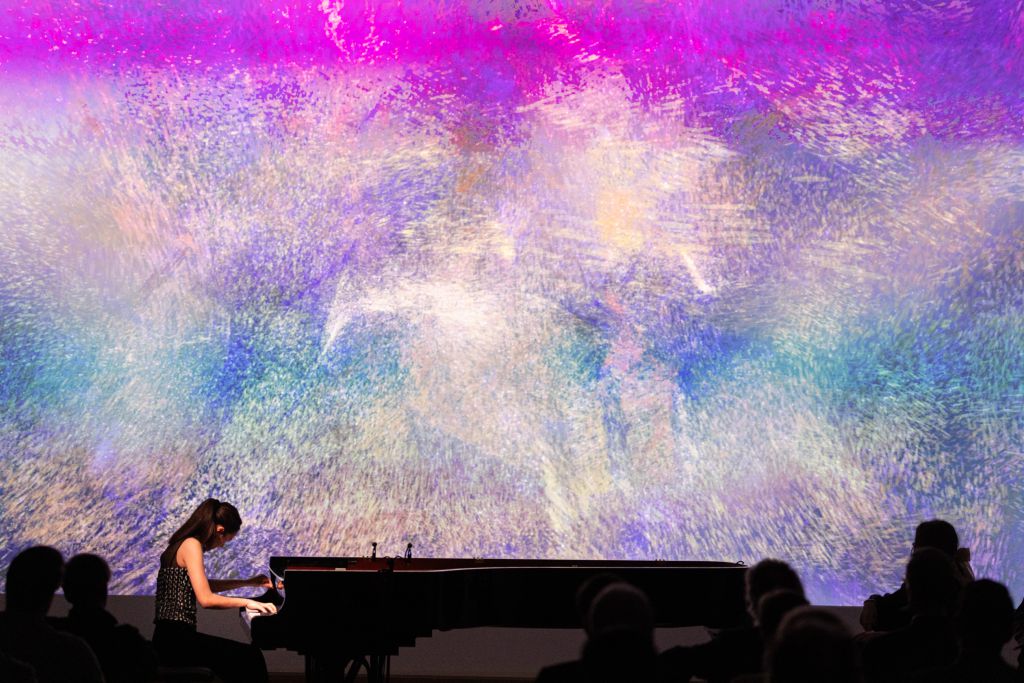
In addition to his artistic and pedagogical activities, Semilakovs researches the phenomenon of synesthesia and “colourfulness” in classical music. Together with Warwara Priadeeva, he gave the audience an insight into the ability to perceive music beyond sound. Both gave personal examples of which sounds they experience as synesthetic in which colours and forms.
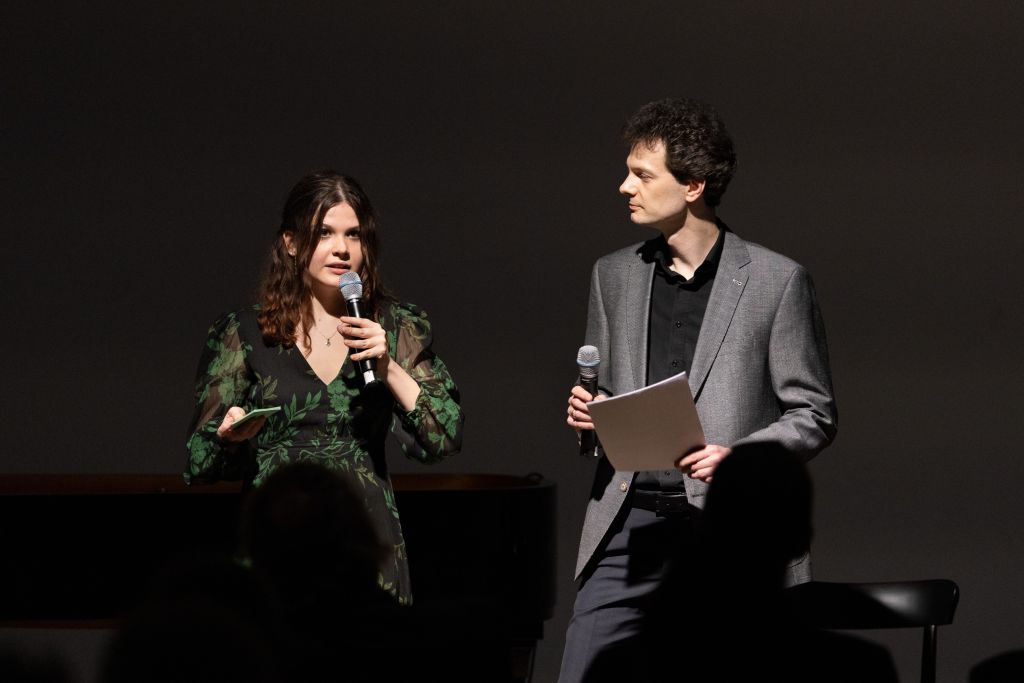
The idea of combining music with other art forms or even translating them into one another has repeatedly inspired numerous composers. Compositions with synaesthetic ideas by Claude Debussy, Alexander Skrjabin, Tristan Murail and Olivier Messiaen were therefore chosen for the evening. At the concert the piano was connected to a software that reacted to the pieces played by mdw students in real time. Depending on the pitch and volume, the colourful visualization on the projection screen changed.
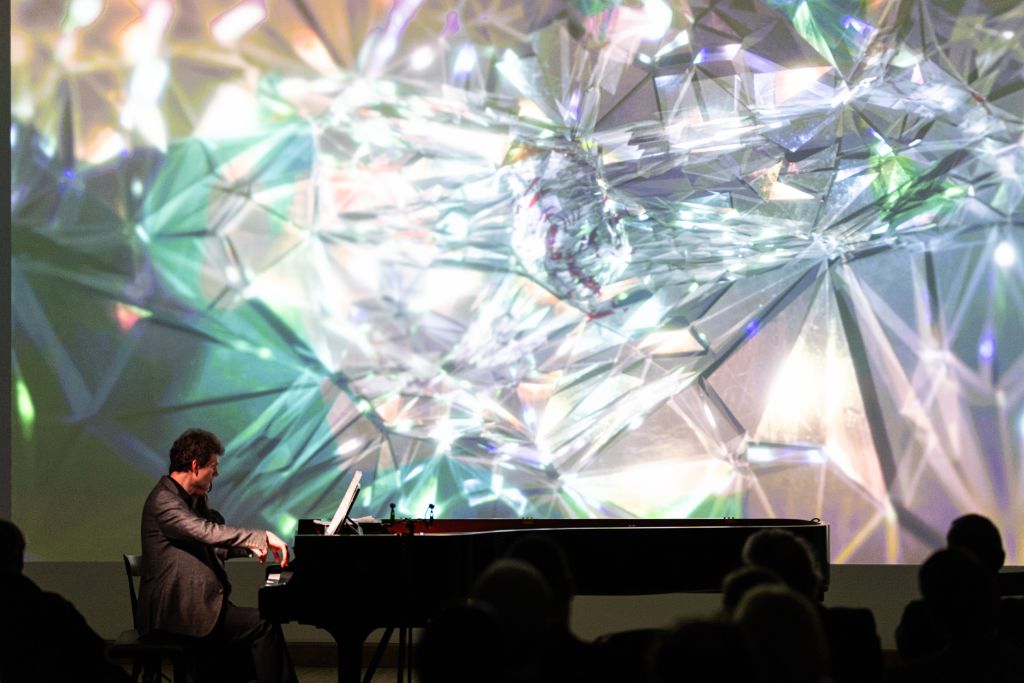
The ideas for the graphics came from Semilakovs, who was able to combine his enthusiasm for piano and computer science in this project. For the design of the projections, he was guided by the themes of the compositions, such as Debussy’s Préludes: Des pas sur la neige (“Steps in the snow”) by the different aggregate states of snow: sometimes shimmering, sometimes melting reliefs appeared, which changed with the sound. The visualizations with the piano playing created an atmosphere with a magnetic effect.
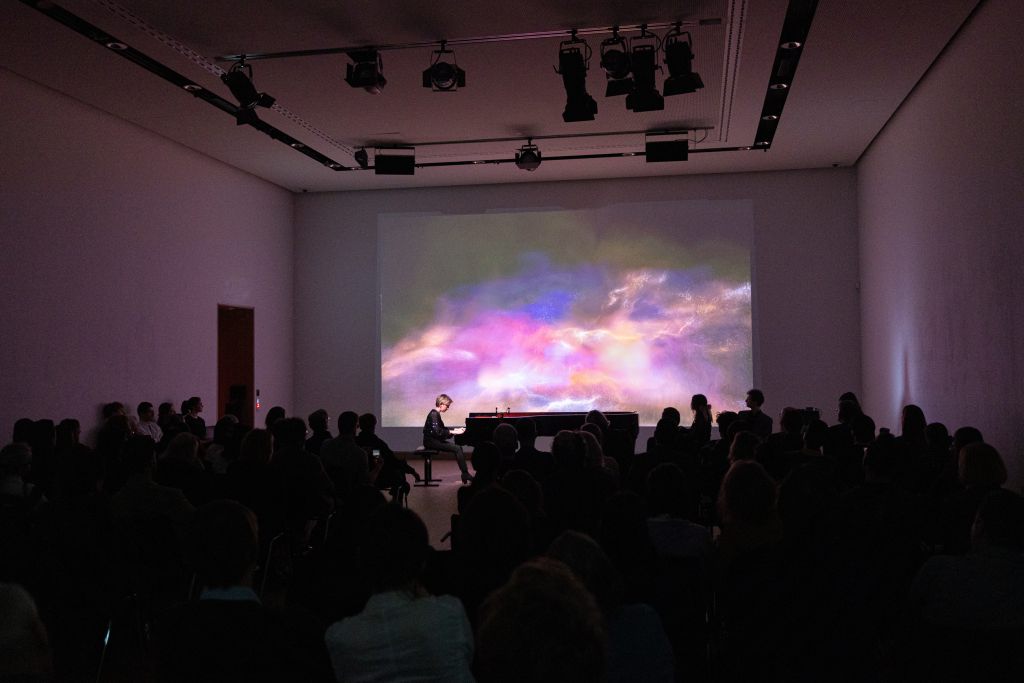
This was particularly intense in Debussy’s Prélu-des: Feux d’artifice (“Fireworks”). Debussy is considered the main representative of impressionist music, which is described as rich in colour. The stars, lightning and colour explosions controlled by the sound immersed visitors in a wealth of colours and shapes. Beyond Keys: Synesthetic Soundscapes impressively demonstrated how music and synesthetic compositional ideas can be “translated” into another art form using modern technical means.
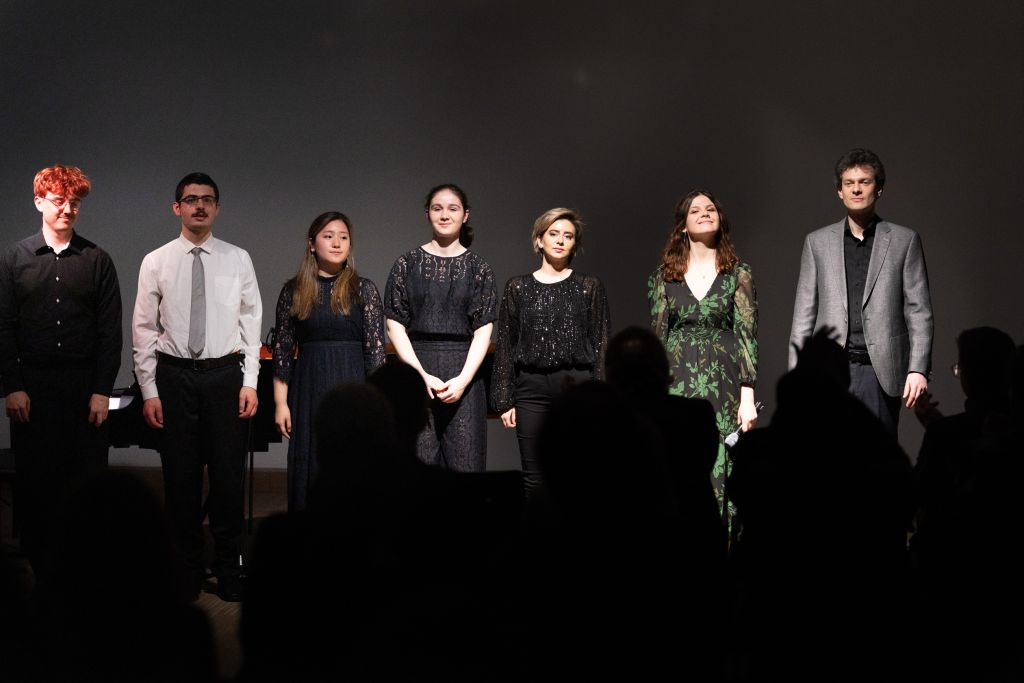
The audience thanked Konstantin Semilakovs and Warwara Priadeeva’s masterful moderation and the rousing performances by mdw students Susanna Hanke, Eliza Agajeva, Yu Ueda, Iliyana Stoyanova, Jean-Pierre Tokmaji and Timofej Gusev with enthusiastic applause. The further KlangBildKlang events promise similarly impressive sensory experiences.

